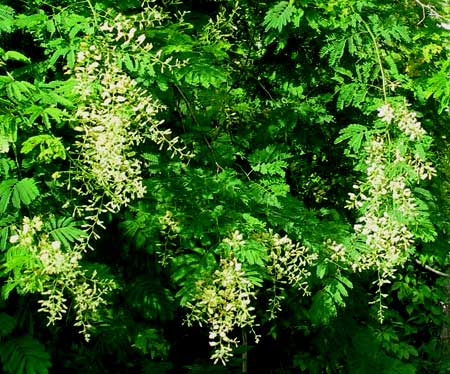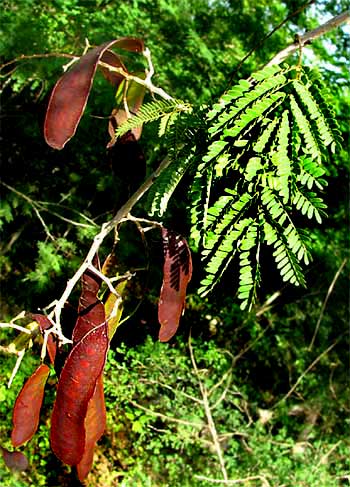The northern Yucatan is home to a surprising number of plants whose technical name, or binomial, end with "gaumeri." "Gaumeri" is the Latinized form of the name Gaumer. George Franklin Gaumer (1850-1929) was a US citizen residing in the Yucatan from 1884 until his death. He collected a remarkable number of rare and endemic species, which he sent to specialists for identification or, if they were unknown to science, for naming. Many of those specialists named the undescribed plants after their discoverer, Gaumer. There's Acacia gaumeri, Caesalpinia gaumeri, Thevetia gaumeri, Vitex gaumeri, Pterocereus gaumeri, Guatteria gaumeri, and many more.
Especially in the central Yucatan there's a common acacia doing something strange for an acacia. The species doesn't have a decent English name so I call it Gaumer's Acacia after the gringo naturalist who discovered it. It's Acacia gaumeri. The Maya call it Box Katzin. The name Katzin or Catzin is applied to several scrubby, spiny acacias and the word box (pronounced bosh) means "black." So, the Maya think of it as "Black Acacia."
The vast majority of acacia species are like the above Sweet Acacia in that they are low, scrubby, spiny trees with ferny leaves. Gaumer's Acacia is like that, except that when given a chance its branches elongate, become slender and vine-like, and like vines clamber over adjacent trees and bushes. At woods edges they cascade into openings very prettily. During the early rainy season, in June or so, basketball-sized clusters of small heads of tiny, white flowers adorn the dangling branches, as shown below:

Later in the season, large, flat, brown legumes replace the flowers, as shown below:

So, why does Gaumer's Acacia produce such long, flexible, un-acacia-like branches? I'm guessing that it's an adaptation for hurricanes. For, Gaumer's Acacia is endemic to the Yucatan -- in the whole world found only in the Yucatan Peninsula -- so it's particularly adapted just to this part of the world. And when the big winds come, it's good to be flexible instead of brittle. If the entire forest gets blown down, it's nice to have vine-like limbs that can grow over the surrounding fallen trees like morning-glory vines.